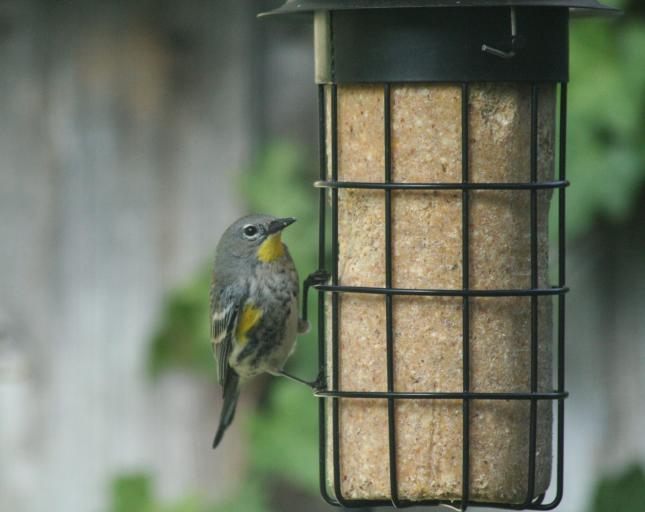Yellow-rumped Warblers
- Yellow-rumped Warblers are impressive in the sheer numbers with which they flood the continent each fall. Shrubs and trees fill with the streaky brown-and-yellow birds and their distinctive, sharp chips.
- Male Yellow-rumped Warblers tend to forage higher in trees than females do.
- Yellow-rumped Warblers are perhaps the most versatile foragers of all warblers. They're the warbler you're most likely to see fluttering out from a tree to catch a flying insect, and they're also quick to switch over to eating berries in fall. Other places Yellow-rumped Warblers have been spotted foraging include picking at insects on washed-up seaweed at the beach, skimming insects from the surface of rivers and the ocean, picking them out of spiderwebs, and grabbing them off piles of manure.
- The oldest recorded Yellow-rumped Warbler was at least 7 years old.
- Yellow-rumped Warblers arrive in the Conejo Valley area usually around late September every year and depart around April.
- The Yellow-rumped Warbler has two distinct subspecies that used to be considered separate species: the "Myrtle" Warbler of the eastern U.S. and Canada's boreal forest, and "Audubon’s" Warbler of the mountainous West. The Audubon’s has a yellow throat; in the Myrtle subspecies the throat is white. Male "Audubon's" Warblers have more white in the wing than the "Myrtle" Warbler. Female Audubon's have less distinctly marked faces, lacking the dark ear patches of the "Myrtle" Warbler. Intermediate forms occur where the two subspecies' breeding ranges overlap, such as in the Canadian Rockies.
Some of the information contained is from www.allaboutbirds.org



